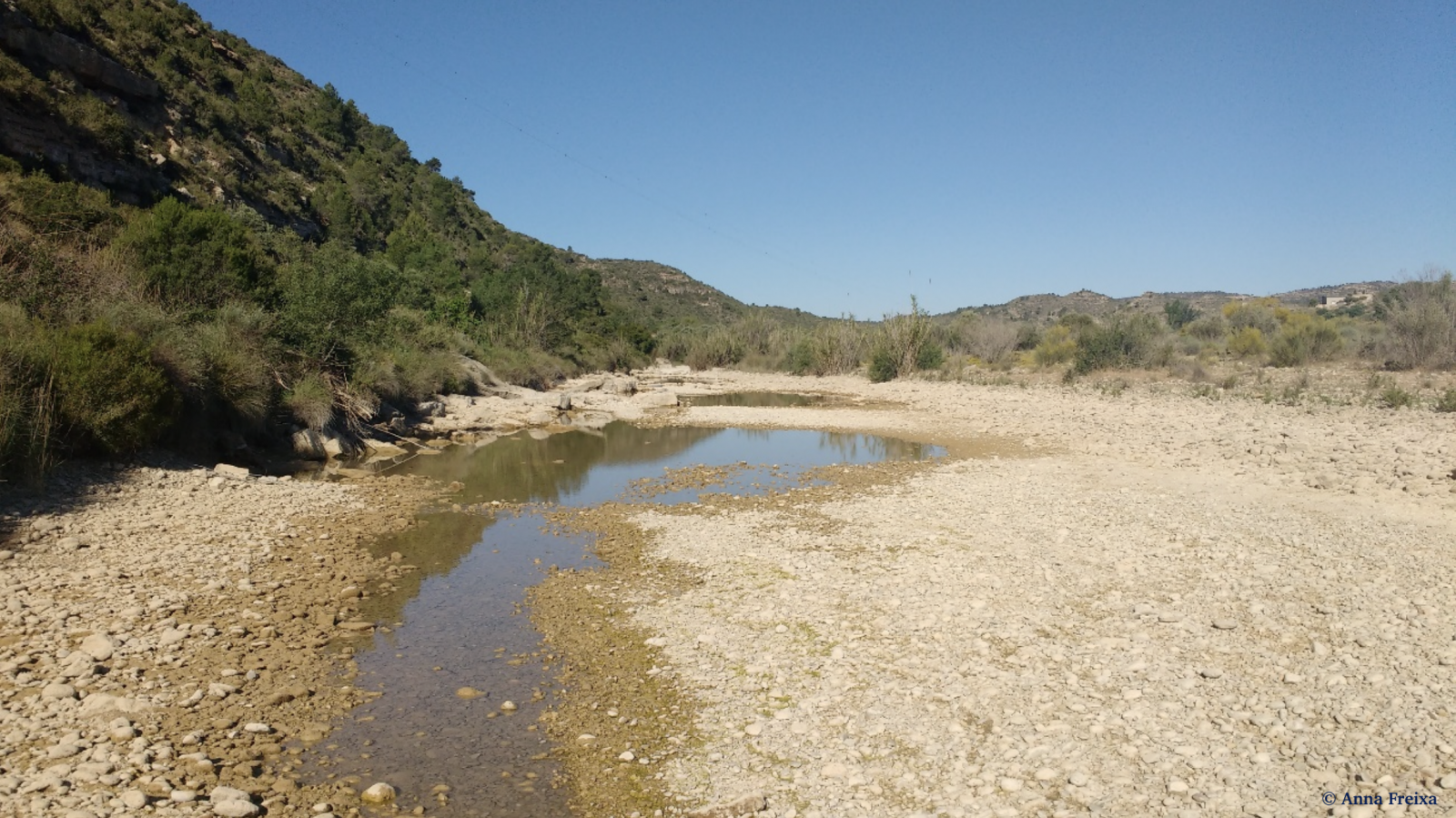When Rivers Dry Up: How Aquatic Bacteria Adapt to Terrestrial Life
By Anna Freixa and collaborators.
 Rivers are dynamic ecosystems where water flow acts as the primary mechanisms involved in species transport, including both aquatic and terrestrial bacteria. Temporary rivers, which stop flowing at certain times or locations, offer a unique chance to study how life adapts when water disappears. These periods of dryness transform previously flowing habitats into dry riverbeds, posing significant challenges for the organisms that live there. Studying how environmental factors drive shifts in community composition is essential to understanding their effects on river ecosystem functioning and health.
Rivers are dynamic ecosystems where water flow acts as the primary mechanisms involved in species transport, including both aquatic and terrestrial bacteria. Temporary rivers, which stop flowing at certain times or locations, offer a unique chance to study how life adapts when water disappears. These periods of dryness transform previously flowing habitats into dry riverbeds, posing significant challenges for the organisms that live there. Studying how environmental factors drive shifts in community composition is essential to understanding their effects on river ecosystem functioning and health. This study focused on the bacteria found in riverbed sediments and how they change when a river dries up. Bacteria play a crucial role in ecosystems by breaking down organic materials, cycling nutrients, and supporting other forms of life. But what happens to these communities when a river switches from a wet, aquatic environment to a dry landscape? We studied two types of river sections: one where water flows all year round and another where water flow stops periodically. The aim was to understand how bacterial communities respond during wet and dry times and whether environmental factors shape these changes. The results showed that bacterial communities adapt remarkably well to changes in hydrology. When rivers dry, some bacteria thrive by adjusting their functions to survive under tough conditions like extreme dryness. The bacterial composition becomes dominated by species adapted to arid soils and limited moisture, a process referred to as "terrestrialization." This shift highlights the adaptability and resilience of bacterial communities to environmental changes. The study also discovered that small pools of water left behind during dry periods act as safe zones for aquatic bacteria, helping to preserve biodiversity even during tough times. These pools play a crucial role in keeping the ecosystem balanced. As climate change leads to longer and more frequent periods of drought, we predict that bacterial communities will continue to shift, favouring species that thrive in dry conditions. These changes could have lasting effects on river ecosystem functioning.
This research highlights the importance of protecting temporary rivers and their unique habitats. It also stresses the need to consider both the temporal variability and small-scale habitat dynamics when studying microbial communities in temporary rivers. By studying these dynamic systems, we can better understand the impacts of climate change and find ways to protect microbial biodiversity in the future.
Read the full study here:
Anna Freixa, Juan David González-Trujillo, Oriol Sacristán-Soriano, Carles M Borrego, Sergi Sabater, Terrestrialization of sediment bacterial assemblages when temporary rivers run dry, FEMS Microbiology Ecology, Volume 100, Issue 10, October 2024, fiae126,
Text written by Anna Freixa and edited by Clara Ruiz and Félix Picazo
